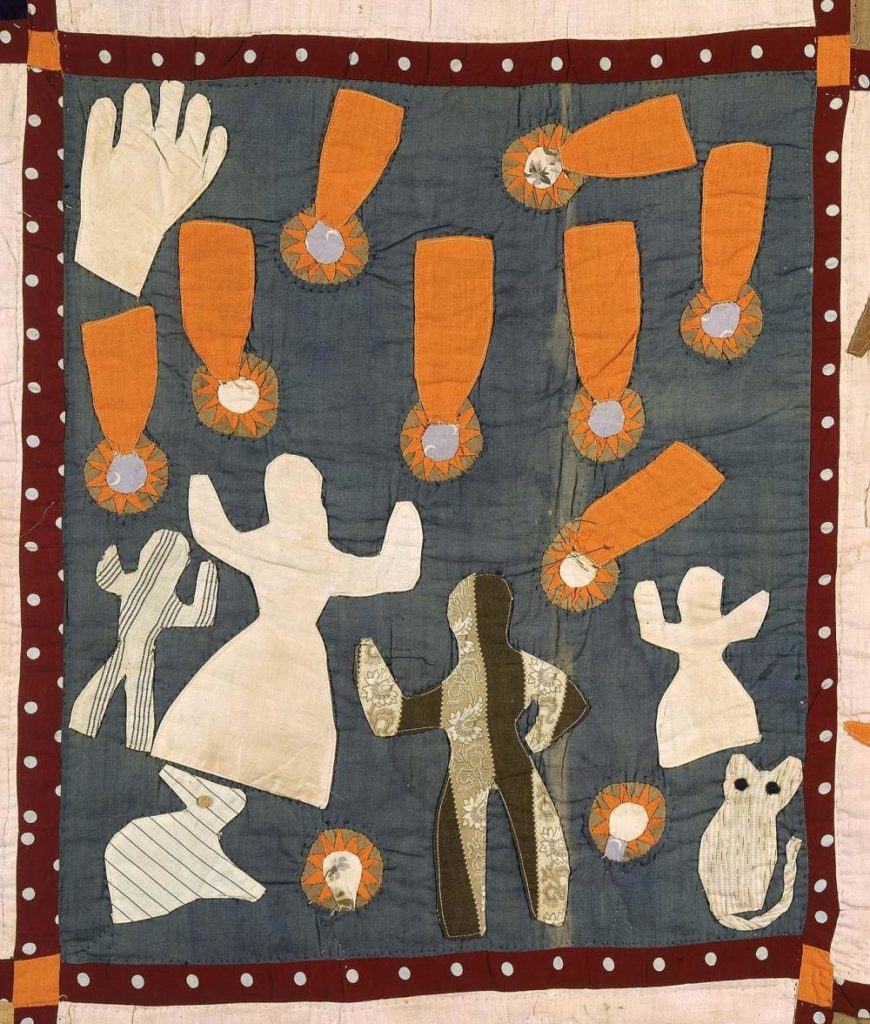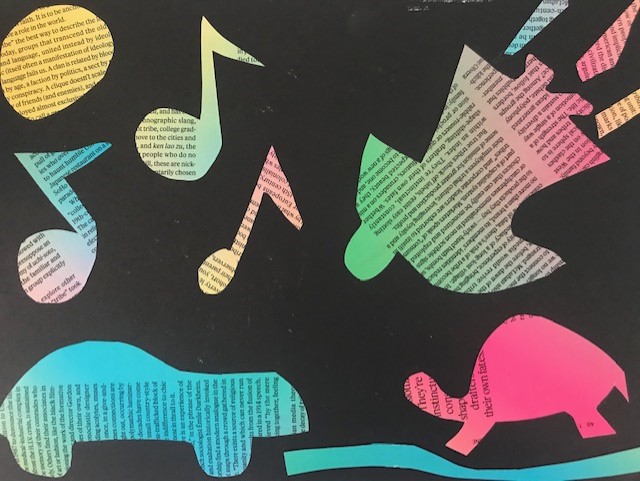In our last session of Art Academy for 6-10 year olds, we focused on folk traditions from around the world. This lesson is inspired by well known American folk artist and quilter, Harriet Powers. Powers was born into slavery in 1839 in rural Georgia. She was a wife, a mother of nine, and it is speculated that she earned a living later in life as a seamstress. Only two of her quilts survive, both of them traditional applique and piecework. They are bold and skillful examples of so called story quilts, an art form which extends back to ancient African textile traditions. Each panel uses symbols and figures to tell a story. Powers' stories are an interesting mix of the mythical and religious and the personal and local.


Objectives:
Students will learn about Harriet Powers' life and work.
Students will situate Powers' story quilts within a tradition that began in Africa and came to the United States through the domestic work of enslaved African women.
Students will look closely at a panel from one of Powers' quilts and make educated guesses about the story being told based on the pictorial symbols chosen.
Students will create their own story panel using pictorial symbols.
Materials:
Students will learn about Harriet Powers' life and work.
Students will situate Powers' story quilts within a tradition that began in Africa and came to the United States through the domestic work of enslaved African women.
Students will look closely at a panel from one of Powers' quilts and make educated guesses about the story being told based on the pictorial symbols chosen.
Students will create their own story panel using pictorial symbols.
Materials:
- sheet of paper (preferably thicker than copy paper)- can be white or colored
- several magazines or patterned craft paper
- scissors
- glue stick
Steps:
1. Briefly introduce the topic of folk art and/or quilting. You may also want to introduce the topic of slavery, especially if you think students have not yet been exposed to it or have had minimal exposure. There can be a lot of confusion around slavery as this is a topic often avoided by adults.
2. Watch one or both of the suggested videos below.
3. Have a discussion after each video and ask students questions about what they learned, noticed, remembered about Harriet and her work.
4. Take some time to look closely at an image of one of Harriet's quilts (Bible Quilt or Pictorial Quilt). Ask what the students notice. When they give an answer, use the follow up question "What makes you say that?" to encourage even deeper observations. Some things to discuss include: how the object was made, color, texture, symbols/forms, speculation about meaning, etc.
5. Focus their attention on one of the panels. Choose one that you know the story behind. Introduce the idea of pictorial symbols and creating a visual story. Take an inventory of the symbols and forms used. Why did the artist choose these symbols? Is the panel effective in telling the story? What choices did the artist make?
6. Switch to the making part of this lesson by having the students imagine that their paper is a panel from a story quilt about their life. Have them choose an important or memorable day from their experience that they think should be included on their quilt. What symbols and forms would tell the story best? What colors and textures would convey the feeling of the day?
7. Give students the time to create their panels with shapes cut from magazine paper or craft paper. Encourage students to make a crowded composition like Powers'.
8. Allow each student to show their work and tell their story. As always, ask students to reflect on their process. What worked? What was challenging?

Resources:
Sewing History: Harriet Powers- This video is a great mix of interviews and images that speak to Harriet Powers' life, work, and legacy. It's about 7 minutes long.
https://www.youtube.com/watch?v=uP3RP1W1rPA
Sewing Stories: Harriet Powers' Journey From Slave to Artist- This is a reading of a storybook by the same title. It's a great way to introduce Harriet Powers to a young audience. It's about 10 1/2 minutes long.
https://www.youtube.com/watch?v=sr-ZJFUm2wk
1. Briefly introduce the topic of folk art and/or quilting. You may also want to introduce the topic of slavery, especially if you think students have not yet been exposed to it or have had minimal exposure. There can be a lot of confusion around slavery as this is a topic often avoided by adults.
2. Watch one or both of the suggested videos below.
3. Have a discussion after each video and ask students questions about what they learned, noticed, remembered about Harriet and her work.
4. Take some time to look closely at an image of one of Harriet's quilts (Bible Quilt or Pictorial Quilt). Ask what the students notice. When they give an answer, use the follow up question "What makes you say that?" to encourage even deeper observations. Some things to discuss include: how the object was made, color, texture, symbols/forms, speculation about meaning, etc.
5. Focus their attention on one of the panels. Choose one that you know the story behind. Introduce the idea of pictorial symbols and creating a visual story. Take an inventory of the symbols and forms used. Why did the artist choose these symbols? Is the panel effective in telling the story? What choices did the artist make?
6. Switch to the making part of this lesson by having the students imagine that their paper is a panel from a story quilt about their life. Have them choose an important or memorable day from their experience that they think should be included on their quilt. What symbols and forms would tell the story best? What colors and textures would convey the feeling of the day?
7. Give students the time to create their panels with shapes cut from magazine paper or craft paper. Encourage students to make a crowded composition like Powers'.
8. Allow each student to show their work and tell their story. As always, ask students to reflect on their process. What worked? What was challenging?

Resources:
Sewing History: Harriet Powers- This video is a great mix of interviews and images that speak to Harriet Powers' life, work, and legacy. It's about 7 minutes long.
https://www.youtube.com/watch?v=uP3RP1W1rPA
Sewing Stories: Harriet Powers' Journey From Slave to Artist- This is a reading of a storybook by the same title. It's a great way to introduce Harriet Powers to a young audience. It's about 10 1/2 minutes long.
https://www.youtube.com/watch?v=sr-ZJFUm2wk
